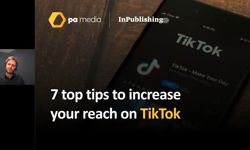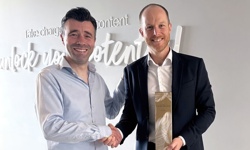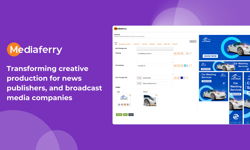
That model has to fit both the brand’s audience and interest vertical and the company’s own skills base and operating processes: a challenging balance to get right.
In preparation for the next mediafutures report, we’ve been talking to some of the 331 media companies who took part in the 2020 survey. At the same time, we’ve also polled the views of 92 Distripress members in 47 countries to get a truly global view – a summary of the Distripress report (Connecting Tomorrow’s World of Media) will appear in the next issue of InPublishing.
What all this tells us is that there are currently five big issues on publishers’ minds at the moment.
Efficiency
Efficient operating is now at the core of every media company. In mediafutures, we track a topline ratio: the company turnover generated per full time employee (FTE). Across our international sample, this averages out at £160,000 per FTE. Yet beneath that topline ratio are a series of more detailed metrics across both editorial and commercial processes. Publishers are digging into their own operations to create flat and flexible organisations that can adapt to rapidly-changing market conditions. This process is also driving new working practices (accelerated by the Working-From-Home explosion during lockdowns) as well as more investment into areas such as tech and automation, staff reskilling, staff support and wellbeing programmes.
Ecommerce
Ecommerce is a key diversification activity, although the term means very different things to different companies. In B2C, ecommerce accounts for an average of only 2% of turnover for consumer magazines and 1% for newspapers. Yet there are significant exceptions, where the figures are way above these industry averages. Also, ecommerce revenues are predicted to more than double over the next two years. So, this is a growth area. Yet for most media companies, the net revenues from B2C ecommerce are still some way behind what they were hoping for and are putting in their budgets.
In addition, there are two big challenges for ecommerce. Firstly, internal company culture, skills and buy-in. Retailing, whether physical or online, is a very different business to creating content, as a number of publishers have found to their cost. Secondly, the tech to make all this happen is not simple or cheap to come by; and requires long-term planning and investment, often over several years – not “quick fixes”. In addition, it has dawned on a number of media companies, that the fuel of any successful ecommerce operation is user-data rather than content, important though content is in drawing eshoppers into the purchase funnel.
Tech Stacks
Tech has always caused traditional publishers real problems. Their real expertise is in content creation and the major players have always gone through cycles of farming tech out and then pulling it back in-house. This approach has normally been driven by short-term cost and investment issues rather than by any great strategic thinking.
Yet as “publishers” have morphed into multi-platform, multiple revenue stream “media companies”, it has become an absolute necessity to have a more joined-up tech strategy. The content creators may still outsource key elements of tech execution to external suppliers, but they actually need to know a lot more about what they are doing, which elements they need to buy in and how all the tech dots join up.
It has become an absolute necessity to have a more joined-up tech strategy.
Sustainability
Behind all the “greenwash” – and there is a lot of that in media at the moment – building a sustainable media business is a real and important challenge. Yet this is not just about publishers; nor is it simply about flipping from print into digital as quickly as possible. As the Distripress report demonstrates, each link in the current supply chain for newspaper and magazine brands (publishers, wholesalers, logistics, retailers) has got a slightly different angle and set of priorities. Also, there is a fundamental conflict between rising consumer expectations for fast fulfilment of everything they order and the environmental impacts of that. A slow supply chain is actually much more eco-friendly than a fast one.
A slow supply chain is actually much more eco-friendly than a fast one.
M&A
M&A activity is clearly not new. Yet it cooled in 2020, but is now becoming a blur of frenetic activity. This is at every level of scale, from tactical swaps and deals between specialist operators, up to strategic, industry-shaping moves, like Dotdash Meredith in the USA. M&A has been tracked for the last few years in mediafutures, in all its different guises (partnerships, collaborations, mergers, take-overs) for all its different reasons (building scale, taking out competitors, extending into new markets – both market sectors and countries – filling competency and skills gaps, clearing out cluttered portfolios, trying to integrate vertically) and with all the different potential players (trade buyers, private equity, Big Tech, wealthy individuals – a new generation of media moguls).
M&A can transform the landscape of a complete sector almost overnight – for good and ill. And who owns what is one of the most fundamental and unpredictable factors in shaping tomorrow’s world of media.
Mapping the fragmentation
The fragmentation of the media business is not new; nor is it necessarily a bad thing. The issue is that it is happening at such high speed, that some disastrous mistakes will inevitably be made. The value of a project like mediafutures, with eleven years of back history, is twofold. Firstly, to benchmark what the performance metrics look like now, providing real insights into what is working currently – and what isn’t. Secondly, the back data highlights that much of what is happening now isn’t new; that there are lessons to be learnt from the past; that our industry operates to clear cycles and operational principles; and that good business decisions will always be based on a clear-sighted view as to what really matters… if only we can remember what that is.
About mediafutures international: mediafutures is an annual benchmarking survey of the industry undertaken by Wessenden Marketing in partnership with InPublishing. In 2020, mediafutures went international with Colin Morrison’s Flashes & Flames and Access Intelligence in the USA as two new partners.
This article was first published in InPublishing magazine. If you would like to be added to the free mailing list, please register here.










